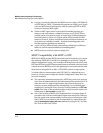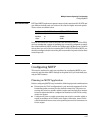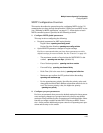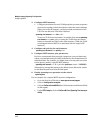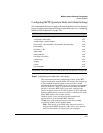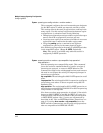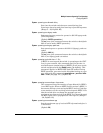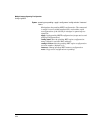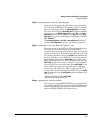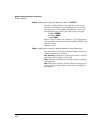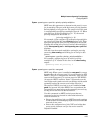
4-23
Multiple Instance Spanning-Tree Operation
Configuring MSTP
Syntax: spanning-tree forward-delay
Sets time the switch waits between transitioning from
listening to learning and from learning to forwarding states.
(Range: 4 - 30; Default: 15.)
Syntax: spanning-tree legacy-mode
Sets spanning-tree protocol to operate in 802.1D legacy mode
(STP-compatible).
(Default: MSTP-operation.)
The no form of the command returns the switch to the default
802.1s native mode (MSTP-operation).
Syntax: spanning-tree legacy-path-cost
Sets spanning-tree to operate with 802.1d (legacy) path cost
values.
(Default: 802.1t.)
The no form of the command returns the switch to the default
802.1t (not legacy) path cost values.
Syntax: spanning-tree hello-time < 1..10 >
If MSTP is running and the switch is operating as the CIST
root for your network, this command specifies the time in
seconds between transmissions of BPDUs for all ports on the
switch configured with the Global option. (the default). This
parameter applies in MSTP, RSTP and STP modes. During
MSTP operation, you can override this global setting on a per-
port basis with this command: spanning-tree < port-list > hello-
time < 1..10 > (see page 4-27). (Default: 2.)
Syntax: spanning-tree max-hops < hop-count >
This command resets the number of hops allowed for BPDUs
in an MST region. When an MSTP switch receives a BPDU, it
decrements the hop-count setting the BPDU carries. If the hop-
count reaches zero, the receiving switch drops the BPDU. Note
that the switch does not change the message-age and
maximum-age data carried in the BPDU as it moves through
the MST region and is propagated to other regions. (Range: 1
- 40; Default: 20)
Syntax: spanning-tree maximum age
Sets the maximum age of received STP information before it
is discarded.
(Default: 20.)




